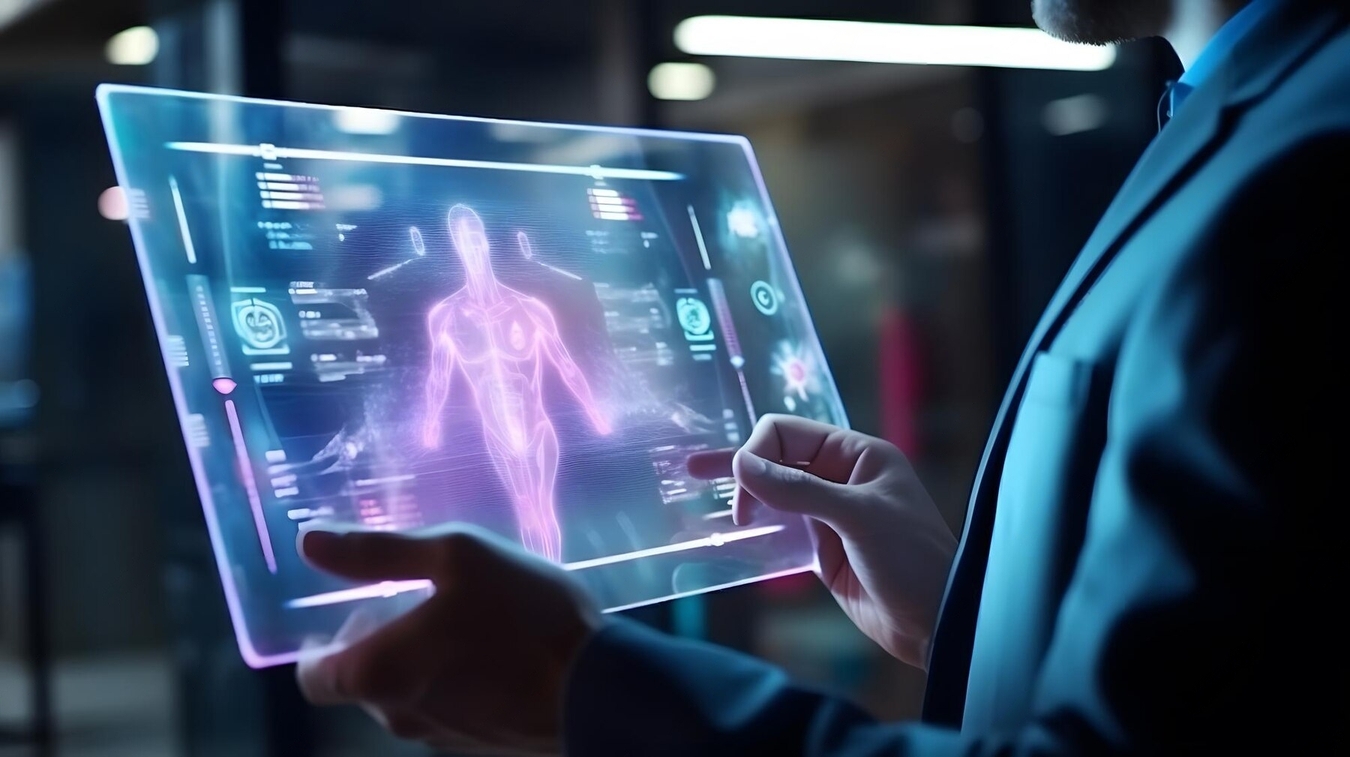
The Internet of Medical Things, or IoMT, has been a driving force in the healthcare sector in recent years, bringing fresh perspectives to persistent problems. Personalized care for chronic illnesses is one area where IoMT has demonstrated extraordinary promise.
Numerous chronic illnesses, including diabetes, heart disease, and respiratory disorders, impact millions of individuals globally. With an aging population and an increase in the prevalence of chronic diseases, the need for care is predicted to skyrocket globally over the next few decades. Currently, 1 in 3 adults globally suffer from one or more chronic illnesses.
The ability of IoMT to collect, analyze, and interpret real-time health data has opened up new avenues for personalized care, improving patient outcomes and quality of life.
According to a report published by Fortune Business Insights™, the market was worth USD 30.96 billion in 2018 and will exhibit a CAGR of 24.5% during the forecast period, 2019-2026 reaching USD 176.82 billion by 2026.
In this blog, we will explore real-life use cases that highlight IoMT’s transformative impact on personalized chronic disease care.
Remote Patient Monitoring: Tracking Through Wearables
The most prevalent use of IoT devices in healthcare is remote patient monitoring. Patients who are not physically present in a healthcare facility can have their health metrics, such as heart rate, blood pressure, temperature, and more, automatically collected by IoMT devices. This eliminates the need for patients to travel to the providers or gather the data themselves. Making educated choices regarding dietary suggestions, lifestyle modifications, and medication adjustments is made easier with the use of this data-driven approach.
- For the more than 30 million Americans with diabetes, glucose monitoring has traditionally been difficult. Real-time glucose monitoring is made possible by IoMT devices like wearable sensors and smart glucose monitors. Patients with long-term diabetes can benefit from prompt feedback and interventions, which improve glycemic control and lower complications.
- Wearable ECG monitors and sensor-equipped smart devices can track a patient’s heart rate, rhythm, and activity levels continuously. When a patient’s heart rate falls abnormally low, an Internet of Things sensor may sound an alert, allowing medical personnel to take appropriate action.
- Sudden, little-to-no warning attacks are common in conditions like COPD and asthma. Sensor-equipped smart inhalers record data on prescription usage, inhalation methods, and environmental elements that impact respiratory health. Furthermore, inhalers that are connected can notify users when they forget their inhalers at home or use them incorrectly.
- IoT sensors, which continuously gather information about neurological signals, promise to greatly simplify the at-home monitoring of Parkinson’s disease. In addition, the devices allow patients to live their lives as usual in their own homes rather than being required to stay in the hospital for long periods of observation.
Designing Mobile Healthcare (mHealth)
In contrast to the past, when patients were only checked on occasionally, mHealth technologies now enable patients to be continuously and regularly monitored. Chronic illnesses are closely monitored electronically so that any red flags can be quickly addressed using electronic data exchange.
When patients experience medical emergencies such as heart failure, diabetes, or asthma attacks, mHealth apps are saving their lives. In clinical trials, the use of mHealth devices and apps is already widespread.
The mHealth app market is rapidly changing, offering convenient options for both patients and caregivers. When it comes to expansion and improved financial performance, healthcare companies ought to think about prioritizing mHealth apps.
Almost 70% of Americans agree with the healthy sense of fulfillment and use mobile health apps in one way or another.
Ingestible Sensors: Monitoring Chronic Gastrointestinal Problems
Gathering information from within the human body is usually a disorganized and extremely disruptive affair. For example, nobody likes to have a camera or probe inserted into their digestive system.
Ingesting sensors allow for much less intrusive data collection from the digestive and other systems. For example, they shed light on the pH levels of the stomach or assist in identifying the cause of internal bleeding in cases of chronic gastritis.
Rather, the most recent technological advancements concerning tiny cameras are limited to the swallowing of a pill-sized ingestible-micro-bio-electronic device (IMBED) that helps to monitor the health of their hosts’ gastrointestinal tracts.
Consequently, the capacity to collect images and track luminal fluid as well as the components of every gut segment, such as electrolytes, enzymes, metabolites, hormones, and microbial communities, is provided by ingestible sensors.
One study published in the Journal “ACS Sensors” has highlighted a comprehensive overview of IoMT-ingestible sensing capsules, to detail the potential information that they can generate.
The ingestible sensor market is expected to reach a compound annual growth rate (CAGR) of 18.7% in the period between 2022 to 2028.
IoMT Managing Chronic Depression and Mood Swings
Information about depression symptoms and patients’ general mood is another type of data that has traditionally been difficult to collect continuously. Early objective diagnosis of depression and related mental health issues is made efficient and objective by the data generated by IoMT devices such as wrist actigraphy.
One research published in the proceedings of “International Conference on Computing, Communication, and Intelligent Systems” revealed UMAP (Uniform Manifold Approximation and Projection) based feature extraction and neural network classifier for depression detection (both Unipolar and bipolar disorders) from IoMT data shows a sensitivity of 96.257% and a specificity of 98.50%.
In addition, “Mood-aware” IoT devices can collect and analyze data such as heart rate and blood pressure, and devices can infer information about a patient’s mental state. Even the movement of a patient’s eyes can be tracked by sophisticated IoT devices for mood monitoring.
IoMT Bringing in Smart Hospitals: Advanced Chronic Care
Improved patient experience is the goal of modern healthcare, especially with patients with chronic diseases. IoMT helps healthcare organizations deal with the challenges of the efficiency of medical procedures in a hospital in a convenient way.
A smart hospital, or an IoT-enabled hospital, provides patients and caregivers with a plethora of new features and advantages. Smart patient monitoring solutions powered by IoMT can combine data from numerous monitoring devices and then intelligently filter that data for use in clinical settings.
Furthermore, centricity in medical records can help reduce costs for patients with chronic illnesses by preventing test duplications and drug-drug interactions.
The global smart hospital market is valued at $29 billion in 2021, and it is expected to jump to $59 billion by 2026. Mayo Clinic, HCA Healthcare and St. Joseph’s Healthcare System are some of the examples that have adopted IoMT expansively to aid in chronic disease management.
Pill Dispensers: Enhancing Medication Adherence
Medication adherence is a common problem in the management of chronic diseases. It causes about 125,000 avoidable deaths in the United States alone each year, adding $500 billion in costs to the healthcare system.
Intelligent pill dispensers are a way that allows IoMT to tackle this problem. These devices monitor medication usage, send out reminders, and notify medical professionals when a dose is missed.
IoMT lowers the chance of disease progression and improves treatment outcomes by encouraging adherence to recommended regimens. Additionally, these tools can check for drug duplicate doses, which is a common issue with long-term illnesses.
Research published in the Journal “Sensors” depicted how a low-cost IoMT pillbox improved medication adherence even with a complex regimen while supporting remote dose adjustment.
Summing it Up
As IoMTs are the future of chronic disease care, Codewave works with hospitals, healthcare organizations, and connected industries (such as online pharmacy, telemedicine, in-house healthcare, wellness centers, and smart medical devices) helping them reimagine their digital future. Codewave offers a unique data strategy driving high patient engagement and integrating technologies & tools into their organizational processes, to deliver maximum patient value.
Our IoMT development services include:
- IoT for sensing data of patients under observation & cloud analytics
- Define critical digitization goals, devise an edge-cloud strategy
- Gather data from the closest to the source (sensing tech nearest to the subject)
- Turn information to intelligence (edge/cloud processing)
- Turn intelligence to action (based on data sensed)
- Data Monitoring & Analysis (diagnostic, prescriptive, predictive)
- Data Visualization & Storytelling (intelligent, intuitive visualization of data through fever charts, infographics, heat maps, etc)
To stay connected with the contemporary advancements in the realm, feel free to connect with us. Let’s walk hand in hand to make the chronic disease management journey better.
